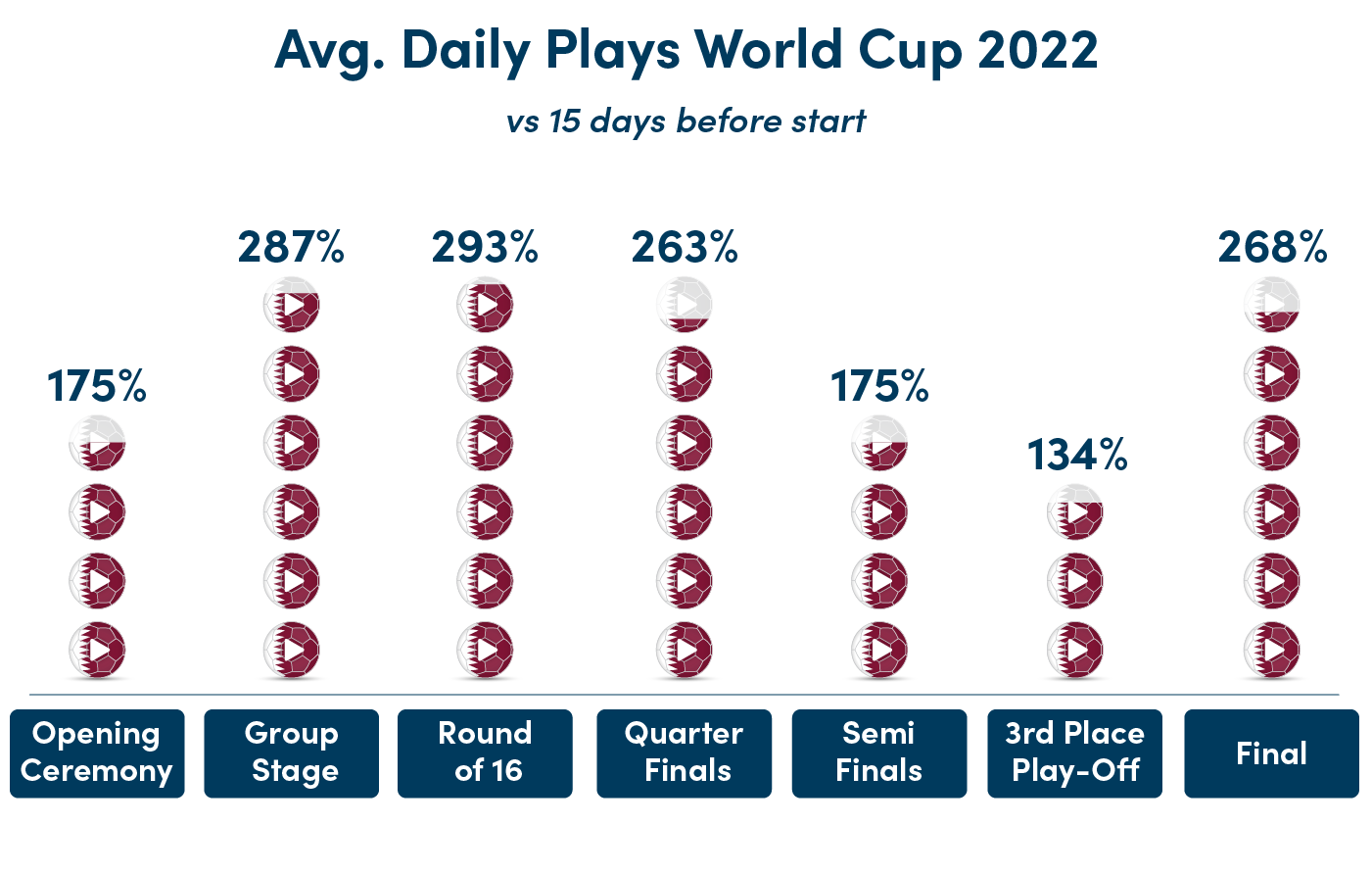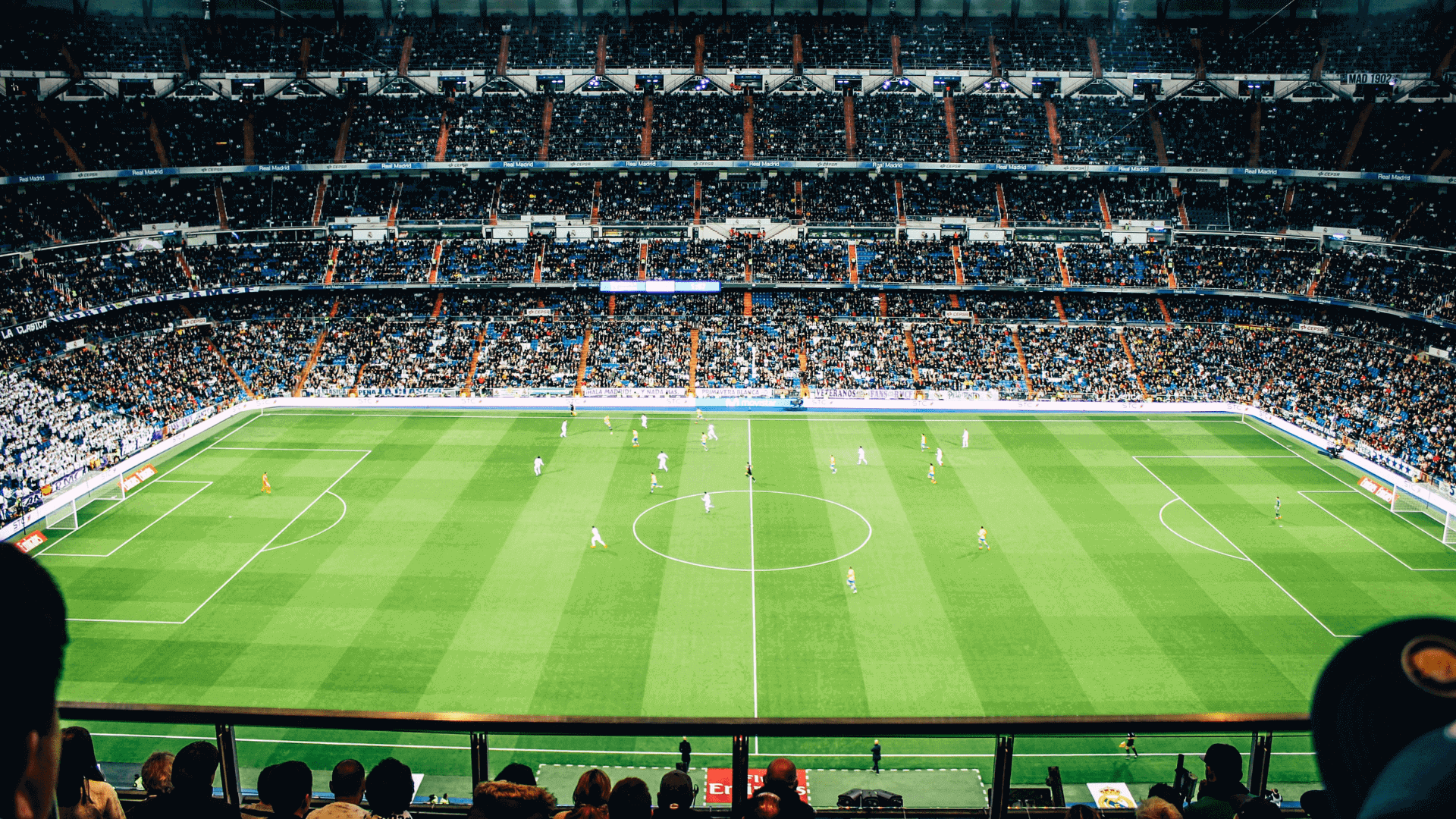After a complicated start marked by off-field controversies and slightly lower audience numbers than those of the 2018 World Cup, the Qatar 2022 World Cup quickly picked up the pace.
Streaming providers saw usage surge in the first week of the tournament, with a selection of NPAW clients registering a 290% increase in the average number of plays compared to the fifteen days before the start of the cup. Average daily playtime numbers experienced a similar increase, with providers clocking in almost three times as much screen time than in the previous fortnight.
From that point on, World Cup matches have set one audience record after another in almost every country around the globe, with the final game between Argentina and France becoming the most-streamed ever in the US.
At NPAW, we have been closely monitoring viewer engagement for a selection of our clients with streaming rights to the Cup, and, from the Open Ceremony to Argentina’s final penalty goal, the numbers tell a story of success for the streaming industry as a whole.

Throughout the World Cup, the selection of client services we tracked registered an increase of 264% in the average daily number of plays compared to the fifteen days before the start of the tournament, and daily playtime surged by 281%. Meanwhile, the average peak day during the Cup saw an average daily number of plays and an average daily playtime more than five times higher than that of the fortnight prior to the tournament.
When looking at the different stages of the tournament, round-of-16 matches were the most watched of the tournament for our selection of clients, registering a 293% increase in the average daily number of plays compared to the two weeks before the tournament, and a 316% higher average daily playtime.
On the other hand, the third-place play-off between Croatia and Morocco was the least streamed match for these services, registering a more moderate 134% increase in the average number of plays and a 130% surge in the average daily playtime.
The Argentina-France final saw a 268% increase in the average number of plays and a 306% higher average playtime compared to the two weeks prior to the tournament. Individual providers registered boosts in both plays and playtimes of over seven times the pre-tournament average.

